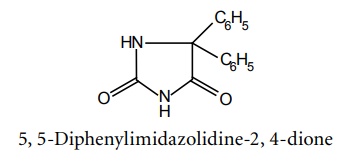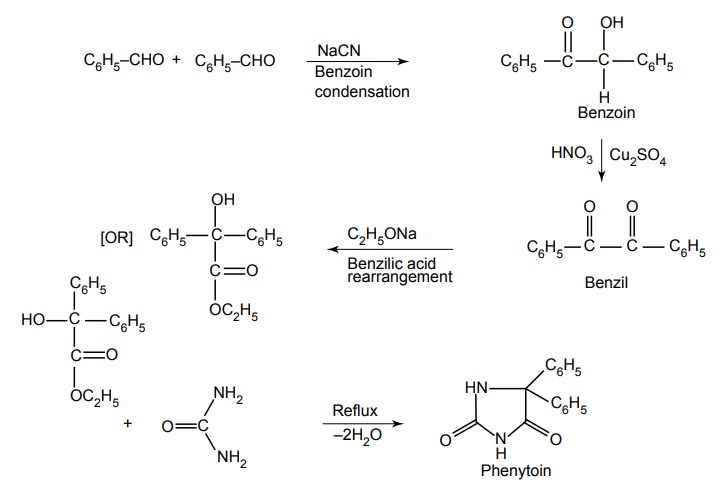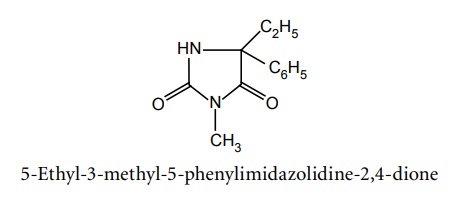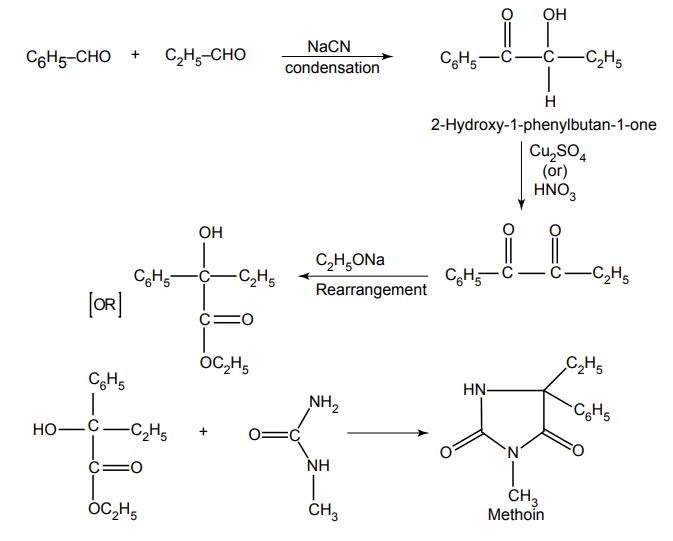Hydantoins
| Home | | Medicinal Chemistry |Chapter: Medicinal Chemistry : Anticonvulsants
Anticonvulsants - Hydantoins- Synthesis and Drug Profile - a. Phenytoin (Dilantin, Epsolin, Eptoin) b. Methoin or mephenytoin - Structure, Properties, uses, Synthesis, Assay, Storage, Dosage forms, Dose | Synthesis and Drug Profile
Hydantoins Mode of action: Hydantoins prevent repetitive detonation of normal brain cells during depolarization shift. This is achieved by prolonging the inactivated state of voltage gate sensitive sodium channels and governs the refractory period of specific neurons, moreover, reduces the calcium influx and inhibits the glutamate activity. Intracellular storation of Na+ leads to the prevention of repetitive firing. Synthesis Metabolism: Phenytoin is metabolized by CYPC9 into a primary metabolite 5-(hydroxyl phenyl)-5-phenyl hydantoin (HPPH). Properties and uses: It is a white crystalline powder, slightly hygroscopic, insoluble in methylene chloride, soluble in water and alcohol. Phenytoin is the first anticonvulsant in which it was clearly demonstrated that anticonvulsant activity could definitely be separated from sedative-hypnotic activity. A common side effect is gingival hyperplasia, a reaction that seldom occurs with mephenytoin, and apparently, never with cardiac arrhythmias. It is one of the most widely used antieplietic agents and it is effective in most forms of epilepsy, except absence of seizures. Some cases of trigeminal and neuralgias respond well to phenytoin. It is also used in the treatment of cardiac arrhythrmias. Assay: Suspend the sample in water, add 0.05 M sulphuric acid and heat gently for 1 min, to this add methanol and cool. Perform the potentiometric titration, using 0.1 M sodium hydroxide. After reaching the first point of inflexion, interrupt the addition of 0.1 M sodium hydroxide, add 5 ml of silver nitrate solution in pyridine, mix, and continue the titration. Read the volume of 0.1 M sodium hydroxide added between the two points of inflexion. Storage: It should be stored in well-closed airtight containers. Dose: The usual dose is 50 to 100 mg. Dosage forms: Phenytoin capsules B.P., Phenytoin injection B.P., Phenytoin tablets B.P. Synthesis Metabolism: It is converted into N-demethyl metabolite 5-phenyl-5-ethyl hydantoin. Properties and uses: It is one of the first hydantoin introduced into therapy. It was introduced as a sedative-hypnotic and anticonvulsant under the name Nirvanol, but it was withdrawn because of toxicity.a. Phenytoin (Dilantin, Epsolin, Eptoin)


b. Methoin or mephenytoin


